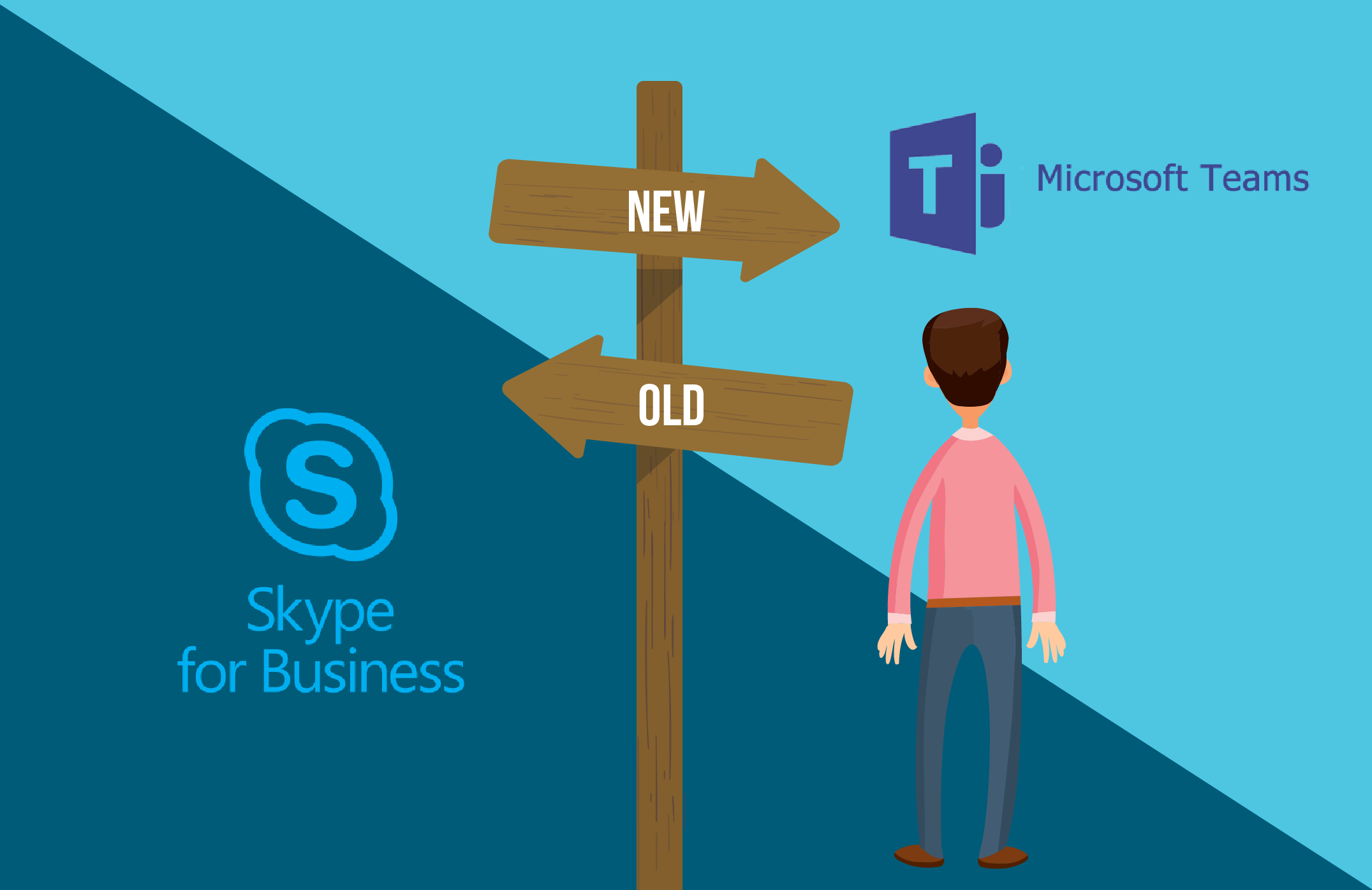Migration to Microsoft Teams
With the COVID crisis, the migration to the cloud got a real boost. Because working from home became the “new normal”, everything must be available from remote. Not easy to accomplish. Do you open your firewall, or do you put everything in the cloud? Opening your firewall is not a fast and easy job. Migrating everything to the cloud is not always possible. But the cloud is the future! What are the options?
In my opinion, we will move a lot to the cloud, but not everything. So, the future will be hybrid solutions: a combination of on-premise and cloud solutions. And when you look at the solution offered by the major cloud suppliers, they always have the option to build a permanent hybrid architecture.
One of the products that can work in 3 types of hosting (full cloud, hybrid or full on-premise), is Skype for Business. In the beginning, Skype for Business was known as Office communicator and was fully on-premise. Over the years, Office communicator transformed into Lync and afterwards to Skype for Business. With the arrival of Office 365, Skype for Business got also an online version. Which is now fully integrated into Teams within Office 365.
The life of Skype for Business at ASP
At ASP we started with Microsoft Lync. We had a full on-premise infrastructure, hosting our Lync environment. A couple of years ago, we upgraded to Skype for Business on-premise. And almost 2 years ago, we started using Office 365.
In the past year, Microsoft pushed everyone towards Teams. Skype for Business online is already the end of life and Microsoft Teams is growing like hell. Every day there is optimization or a new feature. It is almost impossible to follow everything.
At the beginning of 2020, we were considering migrating to Microsoft Teams. Because we were already working with Teams for collaboration, but we were still using Skype for Business on-premise for our telephony. With COVID-19, everything gained momentum.
When you want to migrate to Microsoft Teams including your telephone system, you have 2 options:
- Or you go for fully cloud
- Or you go for direct routing
In the first choice, everything is handled at Microsoft. You don’t need anything anymore on-premise. Your telephone line(s) are terminated in one of the datacenters at Microsoft. With the second choice, you have still an on-premises telephone switchboard. That switchboard will communicate with Microsoft Teams. At ASP, we have chosen the second option.
The choice is made, let’s migrate everyone to Microsoft Teams!
The migration
The first thing we did, was making the connection between our telephone switchboard (SBC = Session Border Controller) and Microsoft Teams. The next step was to make a Hybrid connection between Skype for Business on-premise and Microsoft Teams. This hybrid setup is only temporary, as we wanted to decommission the on-premise Skype for Business environment.
From the moment you have your Skype for Business hybrid and your SBC connected to Microsoft Teams, you can start migrating users. Before doing that, we created all response groups upfront in Microsoft Teams. In the beginning, it was a little bit searching for the correct settings. But once you understand the way of working of Teams, it is easy.
Because we only had around 35 users to migrate, I did all in once after business hours. If you have many users, you can do it smoothly, group by group, department by department,… No need to do all in once.
Microsoft Teams takes all configurations concerning telephone number and sip address over from your Skype for Business environment. So, your users don’t need to get new parameters to use Teams. It is even possible to send a notification to your user on the moment of migrating telling him he has been migrated and gets a link to Microsoft Teams
Some closing technical remarks
When you work with Direct Routing in Microsoft Teams, you have a little extra cost next to your Office 365 licenses. You will need a “phone license” for every user needing his own number. This license will activate an enterprise voice for that user. When you have response groups that have also a telephone number, you don’t need to pay a phone license, but you can activate free phone licenses.
Not every migration is the same, but we did a successful migration to Microsoft Teams. If you want more information or need someone to migrate you to Microsoft Teams, don’t hesitate to contact us.
Be productive with Teams Webinar
On April 15, 2020, colleague Piet Vermeir gave a webinar on how you can collaborate with your colleagues using Microsoft Teams. If you missed this webinar or want to take another look, you can do so here.


